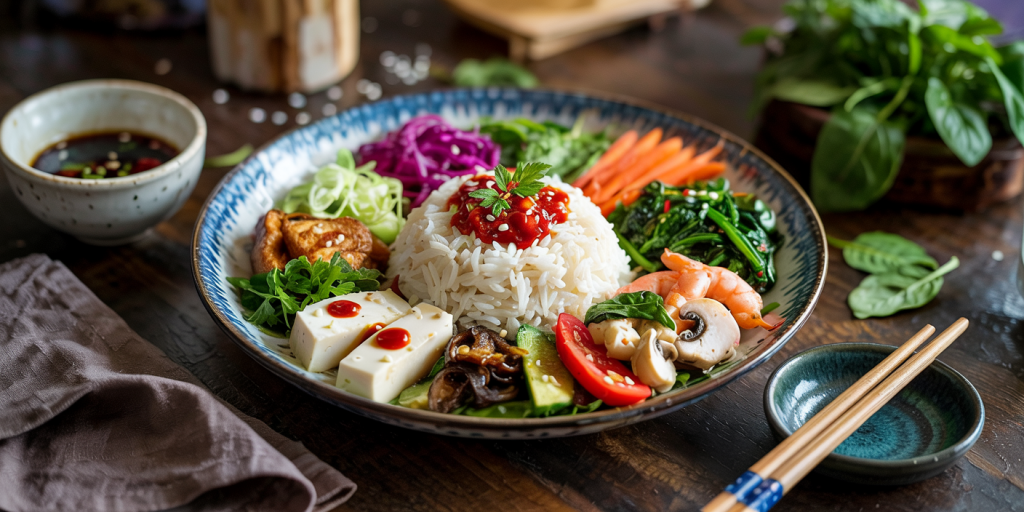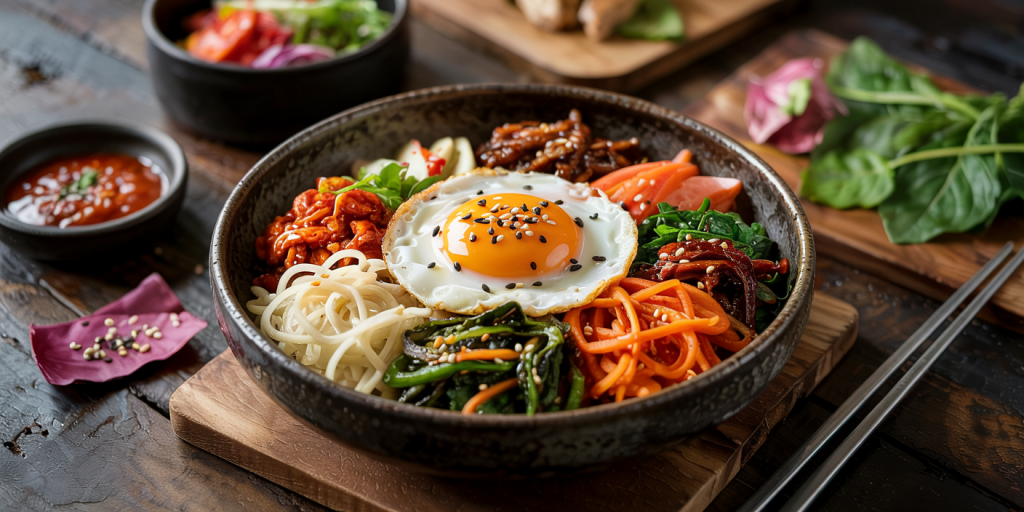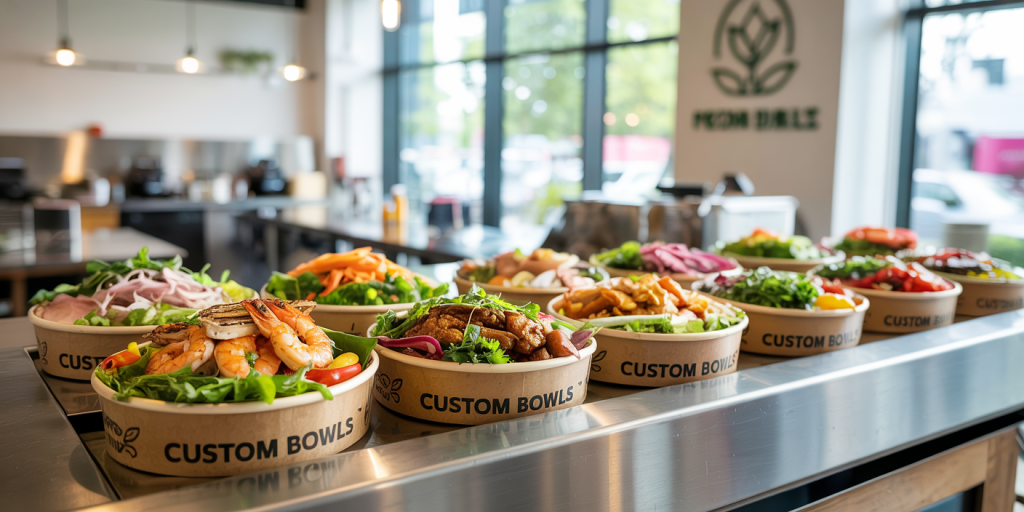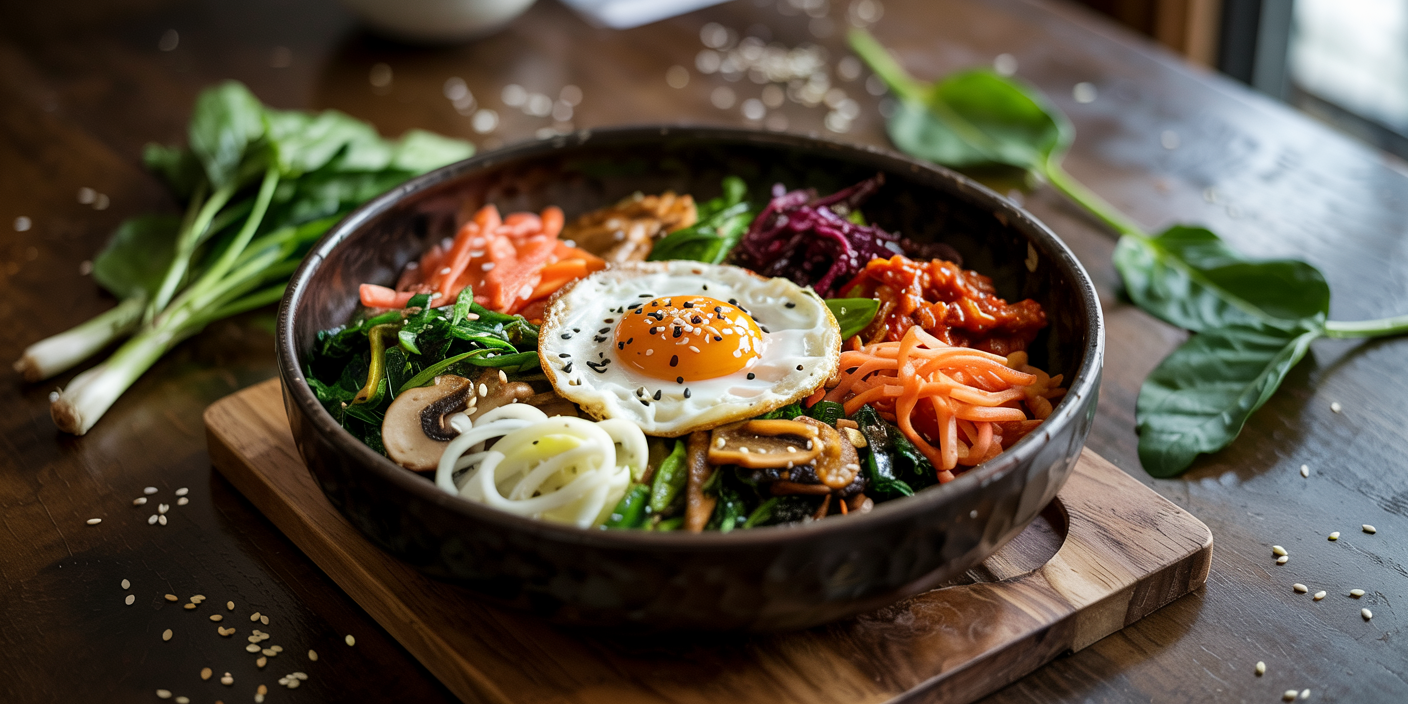In recent years, Asian cuisine has surged in global popularity, with its vibrant flavors, balanced nutrition, and aesthetic presentation captivating food enthusiasts worldwide. Among the many culinary trends inspired by Asian food culture, Asian-inspired dinner bowls stand out as a versatile, practical, and health-conscious dining choice. These bowls marry traditional ingredients and cooking methods with contemporary dining preferences, delivering meals that are not only delicious but also visually appealing and nutritionally complete.
Asian-inspired dinner bowls typically incorporate components such as steamed rice or noodles, an array of fresh vegetables, protein sources like tofu or seafood, and savory sauces crafted from soy, miso, or chili pastes. The concept of layering different flavors and textures in a single bowl reflects the rich culinary traditions across East and Southeast Asia while adapting to modern lifestyles that favor quick, wholesome meals. Let’s explore the rising trend of these bowls, their cultural significance, nutritional advantages, versatile ingredients, and future growth prospects.


The Cultural Roots of Asian-Inspired Dinner Bowls
Asian dinner bowls draw heavily from centuries-old culinary practices in countries like Japan, Korea, China, Thailand, and Vietnam. For example, the Japanese donburi bowls consist of steamed rice topped with protein and vegetables, often seasoned with soy-based sauces. Korean bibimbap is a vibrant, mixed rice bowl incorporating sautéed vegetables, gochujang (fermented chili paste), and egg or meat. In Vietnam, the concept extends to noodle bowls such as pho, where richly flavored broths create a warming and hearty meal.

The cultural significance of these bowls lies in their balanced approach to food. Asian diets traditionally emphasize moderation, harmony in flavors, and the combination of various food groups within a single dish. This method ensures that meals are not only satiating but also nutritionally balanced. Real case study examples include traditional Okinawan bowls, famous for contributing to the longevity of Okinawan populations due to their low-calorie yet nutrient-dense profiles.
Moreover, Asian-inspired bowls often integrate elements of mindful eating, encouraging consumers to savor each bite and appreciate the harmony of flavors and textures. These culturally rich aspects have made dinner bowls a practical and healthful way to experience the diversity of Asian cuisine, easily adaptable to the modern fast-paced world.
Nutritional Benefits and Health Impacts
One of the key reasons behind the surge of Asian-inspired dinner bowls in Western diets is their nutritional profile. These bowls often combine a carbohydrate base—such as jasmine rice, soba noodles, or sticky rice—with an assortment of vegetables, lean proteins, and nutrient-packed sauces. According to a 2022 report by the World Health Organization (WHO), diets high in vegetables, whole grains, and lean meats significantly reduce the risk of chronic diseases such as diabetes, heart disease, and obesity.
For instance, a typical Korean bibimbap bowl includes antioxidant-rich vegetables like spinach, carrots, zucchini, and mushrooms along with an egg or lean meat, making it a nutrient-dense meal with ample fiber, vitamins, and minerals. The inclusion of fermented ingredients like kimchi provides additional probiotics that support gut health, a factor increasingly recognized in nutritional science.
In contrast, many Western fast-food meals are calorie-dense with low micronutrient content, often leading to dietary imbalances. The shift towards Asian-inspired bowls reflects an increased consumer awareness of the importance of balanced nutrition. Table 1 below compares the nutritional values of a traditional American fast-food burger meal with a Korean bibimbap bowl for an average serving.
| Nutrient | American Burger Meal (1 serving) | Korean Bibimbap Bowl (1 serving) |
|---|---|---|
| Calories | 800 kcal | 600 kcal |
| Protein | 40 g | 30 g |
| Total Fat | 45 g | 15 g |
| Saturated Fat | 15 g | 3 g |
| Carbohydrates | 60 g | 80 g |
| Dietary Fiber | 5 g | 10 g |
| Sodium | 1100 mg | 800 mg |
| Vitamins & Minerals | Moderate | High |
This comparison shows that Asian-inspired bowls provide lower saturated fat and total calories while delivering more fiber and micronutrients, supporting healthier eating habits without compromising flavor.
Versatility and Ingredient Selection
One of the most appealing characteristics of Asian-inspired dinner bowls is their versatility. The format allows customization based on dietary preferences, ingredient availability, and flavor profiles ranging from mild and sweet to bold and spicy. The core components include a starch base, a protein source, fresh or cooked vegetables, and a sauce or broth that ties the dish together.
In Japan, donburi bowls might utilize short-grain white rice topped with teriyaki chicken or tempura vegetables. Thai-inspired bowls may feature jasmine rice paired with spicy peanut sauces, grilled shrimp, and a mix of herbs such as cilantro and mint. Meanwhile, in Vietnam, the bowls incorporate rice noodles with fresh herbs, sliced beef, and tangy fish sauce dressings.
The choice of proteins also enhances dietary inclusiveness. Plant-based proteins such as tofu, tempeh, and seitan are common, accommodating vegetarians and vegans. Seafood options like salmon or shrimp offer omega-3 fatty acids, boosting cardiovascular benefits. Meat alternatives provide richer flavors, balancing the palate linking to traditional preferences.
For example, a practical case of customization can be seen in many Asian fast-casual restaurants in metropolitan cities like New York and London, where customers can build their own bowl by selecting ingredients from a diverse menu. This concept allows for daily ingredient rotation, minimizing food waste and supporting sustainability, an increasingly important consideration for consumers and businesses alike.
Practical Preparing and Presentation Tips
Creating authentic yet approachable Asian-inspired dinner bowls at home or in food service requires understanding key preparation techniques and presentation methods that enhance the overall dining experience. Steaming, stir-frying, and marinating are foundational cooking methods that preserve nutrients while maximizing flavors.
To illustrate, properly cooked jasmine rice forms the foundation for many bowls and should be fluffy and slightly sticky for authentic texture. When preparing proteins, marinating chicken or beef overnight with a mixture of soy sauce, garlic, and sesame oil guarantees a tender and flavorful result. Vegetables can be blanched quickly to retain crispness and color, adding visual appeal and textural contrast.
Presentation plays a critical role as well. Asian dinner bowls are traditionally arranged with a clear separation of ingredients, creating vibrant, colorful displays that stimulate appetite. Bowls with contrasting colors such as bright orange carrots, deep green spinach, and vivid red chili slices not only look inviting but also highlight the nutritional diversity.
Professional chefs emphasize the balance of flavors—sweet, salty, sour, bitter, and umami—in every component. For instance, adding a small drizzle of yuzu ponzu or sprinkling toasted sesame seeds on top can elevate the sensory profile significantly. This careful balance ensures that each bite offers a complex interplay of tastes and textures.
Market Trends and Economic Drivers
The popularity of Asian-inspired dinner bowls is supported by broader market trends in food consumption. According to a 2023 report by Grand View Research, the global healthy meal kit delivery services market, which often includes Asian-inspired options, is projected to expand at a compound annual growth rate (CAGR) of 12.3% between 2023 and 2030. This growth is fueled by increased consumer demand for convenient, nutritious, and ethnically diverse meals.
Restaurants and meal delivery platforms have responded by expanding their Asian-inspired bowl offerings. Chains like Sweetgreen, Bibibop Asian Grill, and Pick Up Stix have incorporated customizable bowl menus that prioritize fresh ingredients and balanced nutrition. In addition, consumers are drawn to bowls due to their portion control, an essential factor in managing caloric intake.
Economic factors such as increased urbanization and the rise of single-person households also play a role. Bowls provide a single-serving dining option that is convenient, filling, and less wasteful compared to multi-dish traditional Asian meals. Furthermore, social media trends highlighting aesthetically pleasing foods increase bowl consumption, as diners seek dishes that photograph well and align with their wellness goals.
Future Perspectives: Innovation and Sustainability in Asian Dinner Bowls
Looking forward, Asian-inspired dinner bowls will continue to evolve in response to shifting consumer preferences, technological advances, and sustainability concerns. Innovations such as plant-based meat alternatives and lab-grown seafood integrated into bowls address ethical and environmental challenges posed by conventional meat production.
An emerging trend is the incorporation of superfoods like seaweed, spirulina, and ancient grains—quinoa and black rice—into traditional Asian bases. This hybridization combines the best of both worlds, meeting demands for novel flavors and enhanced nutrition. For example, startups in Asia and the West are developing fusion bowls that blend Japanese cuisine with Peruvian or Mediterranean elements, appealing to adventurous palates.
Sustainability will become a core driver in ingredient sourcing and packaging. Cold chain technologies and locally grown vegetable and herb crops reduce carbon footprints. Restaurants and meal kit providers are increasingly adopting biodegradable or reusable packaging to align with green initiatives, which are gaining traction among environmentally conscious consumers.
Lastly, advancements in AI and data analytics could personalize dinner bowl recommendations based on users’ dietary restrictions, fitness goals, and flavor preferences. By leveraging consumer data, companies can optimize ingredient combinations that maximize health benefits and minimize waste, enhancing the overall dining experience.
In summary, Asian-inspired dinner bowls embody a harmonious balance of tradition, nutrition, and convenience. Their cultural authenticity, combined with adaptability to modern lifestyles, positions them as an enduring and evolving staple in global food culture. As awareness about health, sustainability, and culinary diversity grows, these bowls will undoubtedly play a pivotal role in shaping future food trends for years to come.

Deixe um comentário